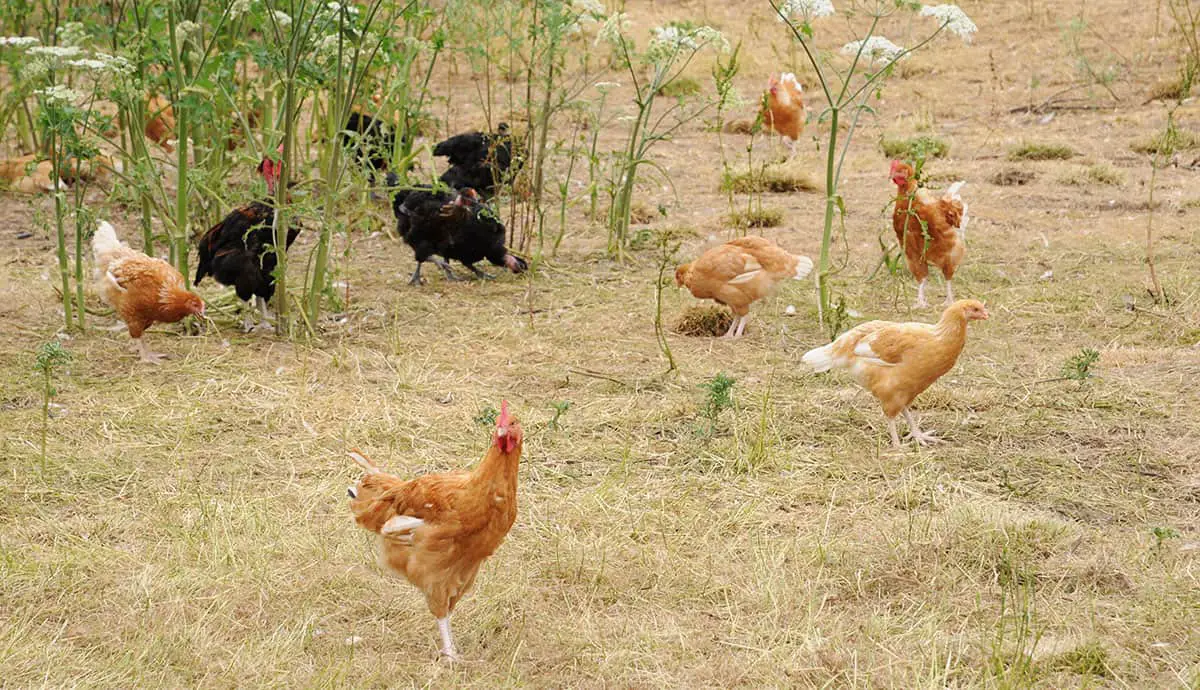Living in the desert comes with a unique set of challenges. To many low desert dwellers, one of those challenges is selecting a chicken breed that can handle the temperatures.
As deserts can get very hot and dry for extended periods, you should choose very heat-hardy breeds. While most chicken breeds can survive in most biomes, some are unquestionably more suited for the desert environment than others. I.E., breeds that were specifically bred to handle hot climates.
These chicken breeds will thrive in hot desert environments:
- Leghorn Chickens
- White-Faced Black Spanish
- Andalusians
- Fayoumi
- Naked Neck Chickens
Let’s talk a bit about what characterizes a chicken well-suited for the desert environment and why these breeds are great options. In the end, I will offer some suggestions on how to make chickens comfortable on hot days.
Table of Contents
How to Identify Heat-Hardy Chickens
These are four characteristics that make a chicken well-suited for the hot low deserts:
- Large combs, wattles, and earlobes: Chickens use their combs and wattles to regulate their body temperature. In warm weather, they are used to disperse excess body heat into the air. Thus, chickens with a more pronounced comb and wattles can more effectively adapt to high desert temperatures. The earlobes are believed to have a similar function.
- Lighter chickens: Light chickens with less fat can easier manage the heat. Another benefit of light birds is that they tend to be more flighty, which will help protect them against the wide range of hungry predators that roam the deserts.
- Fewer feathers: One primary purpose of feathers is to keep the bird warm during the winter. A thick plumage makes it harder to get rid of excess heat; this includes feathers on their legs.
One could argue that white and light feathers are preferable over dark feathers, as dark colors absorb more sunlight. But the dark color also absorbs more heat from the chicken’s body, which would be beneficial in a breeze. I suspect color is not a significant factor when choosing a heat-hardy chicken breed. - Originate from warm climates: Chickens originally bred in warm climates have proven their ability to sustain high temperatures. While, say, Norwegian Jaerhon might manage reasonably well in the low desert, it has not had the centuries of adaptation that their Mediterranean and African cousins had.
What About the Cold Nights?
Deserts can get very cold in the nights, so how do you make sure your chickens can handle the dark hours?
I would not consider this much of an issue. Chickens generally handle cold very well, and while specifically cold-hardy breeds would not fare so well in the desert, the opposite is not as much of an issue.
Great Chickens for the Desert
So what makes the five breeds mentioned so great for chicken keepers living in the desert? Let’s go through them one by one.
Leghorn Chickens
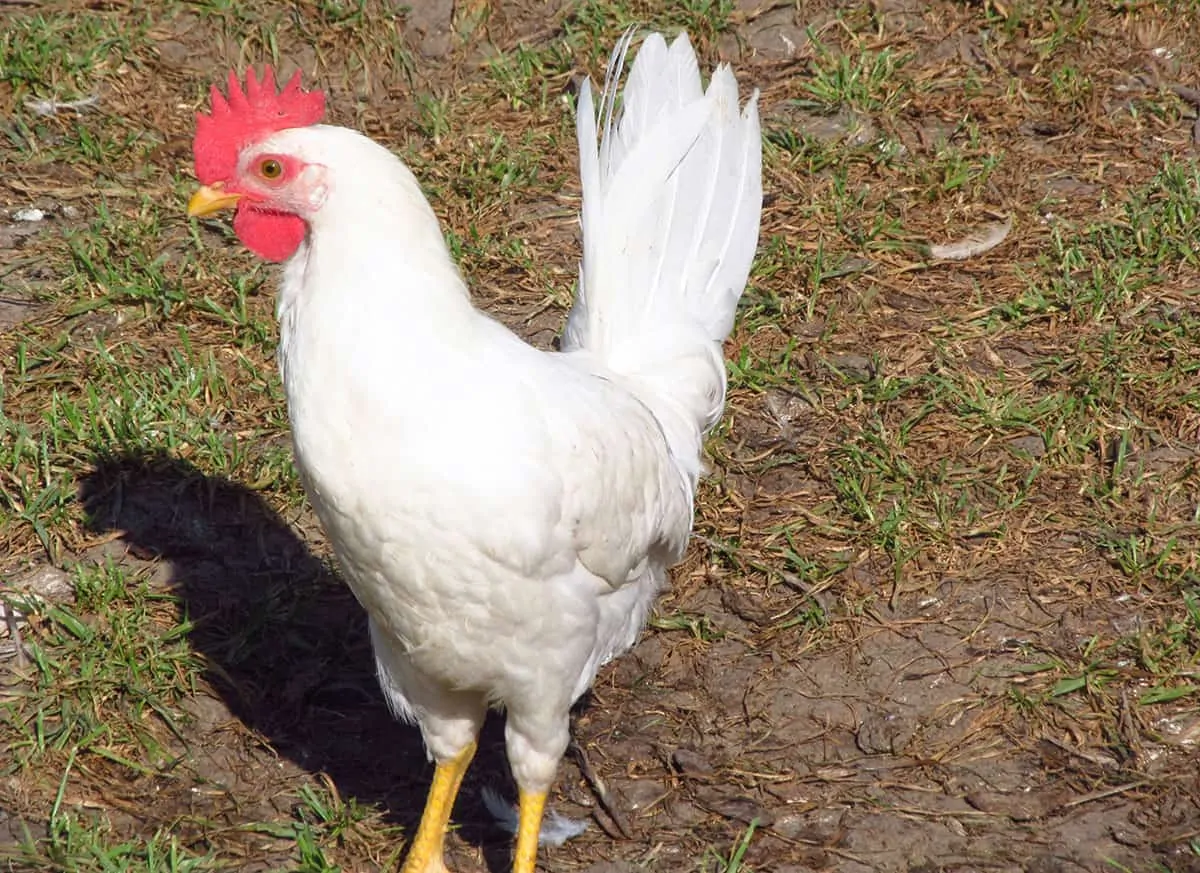
White Leghorn originate from the Port of Leghorn, Italy. Originally they were smaller but have since been bred to medium size. Their slim built, large comb and waddles, and general hardiness makes them bell-suited for a hot environment.
This is a popular breed in the US due to its high egg production and low feed-to-egg ratio. They usually start laying early in life, and a healthy chicken can lay up to 320 eggs per year. That means a small family can be self-sufficient in eggs with a flock of just three or four hens.
Leghorn is also very popular among commercial farmers who prefer pure breed chickens over hybrid layers. It is, however, not a great meat bird.
White-Faced Black Spanish
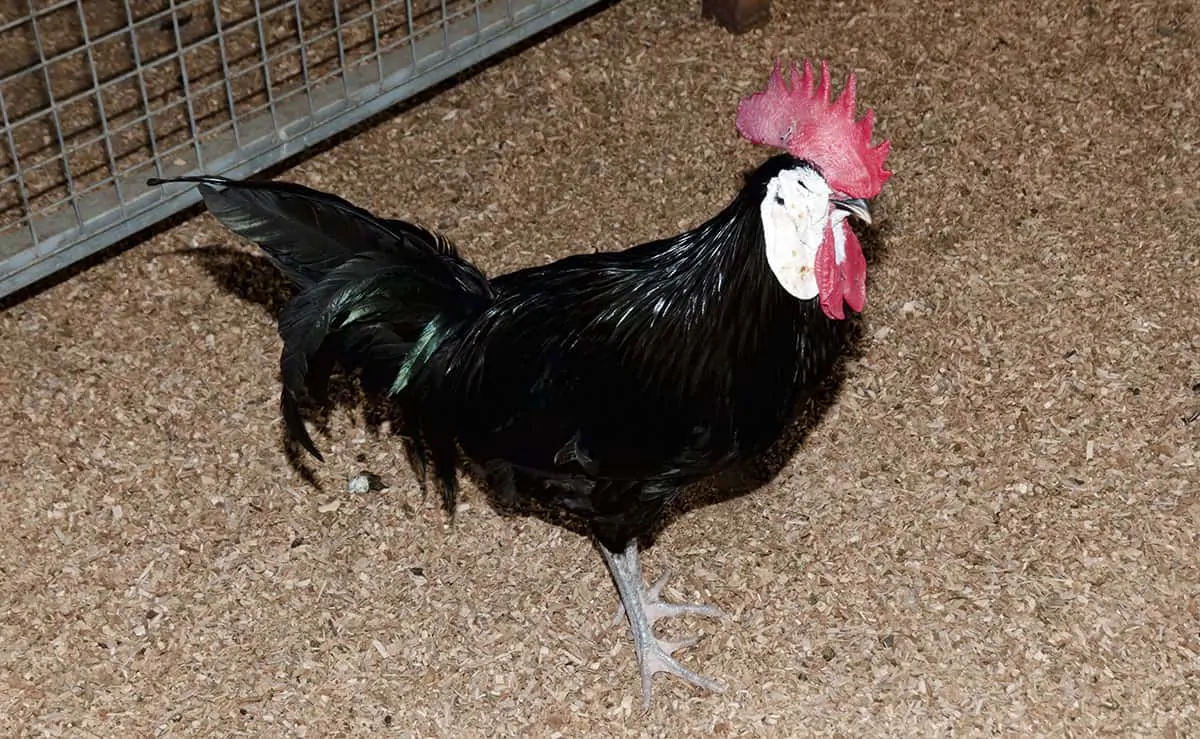
Originating in Spain, this medium-large breed with black feathers and a characteristic white face and earlobes is a beautiful bird.
Both roos and hens have very large comb relative to other chicken breeds, which allows them to effectively regulate their body temperature in the desert heat.
A White-Faced Black Spanish hen will lay about 160–180 large, white eggs per year. Despite their size, they are relatively slim birds, which makes them less popular as meat birds. However, they do have very tender and tasty meat.
Andalusians
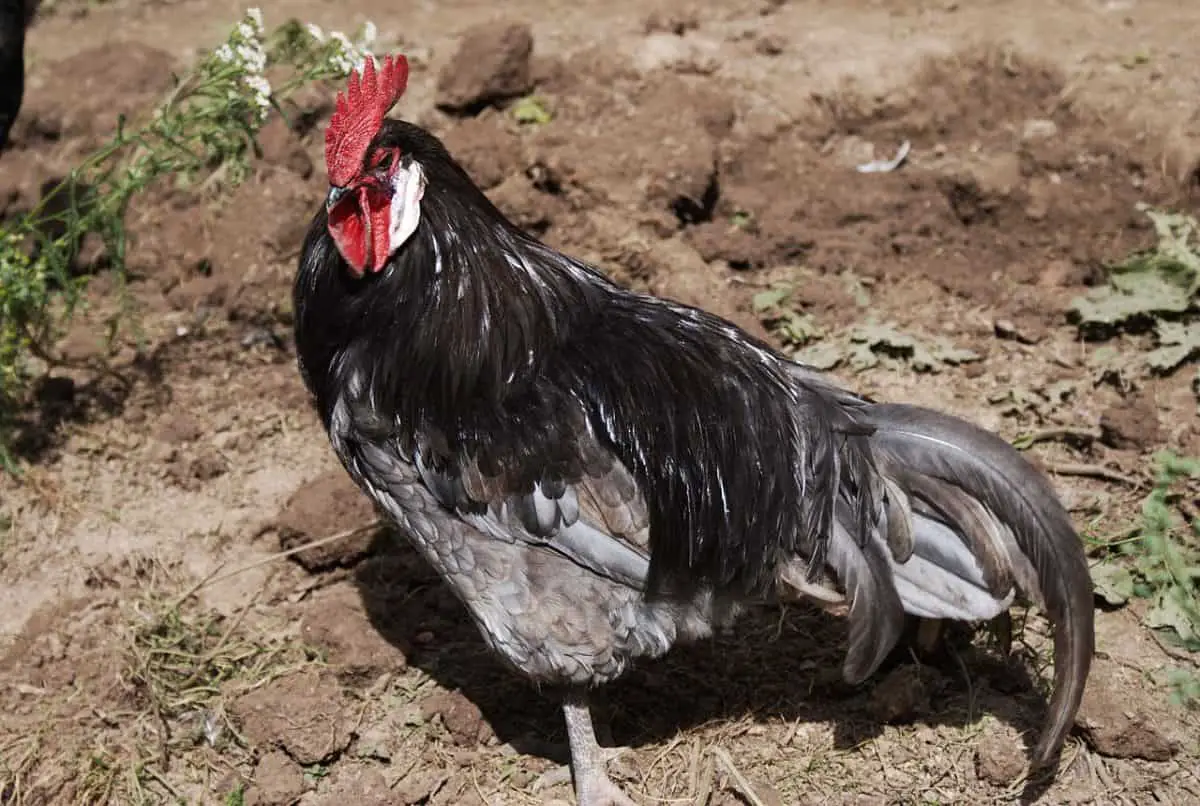
Andalusian chickens originate from Andalusia, Spain. Their beautiful, light, blue plumage makes them look somewhat like blue Australorp, but smaller and lighter.
A typical Andalusian hen will produce around 150 medium-large white eggs per year, and they are considered very reliable and consistent layers. The breed is relatively rare outside of Spain but can be found at specialized breeders and diversified hatcheries.
Maintaining a blue breeding line requires some effort as it results from mating black and splash birds. However, this is not necessary unless the color is a priority to you.
Fayoumi Chickens
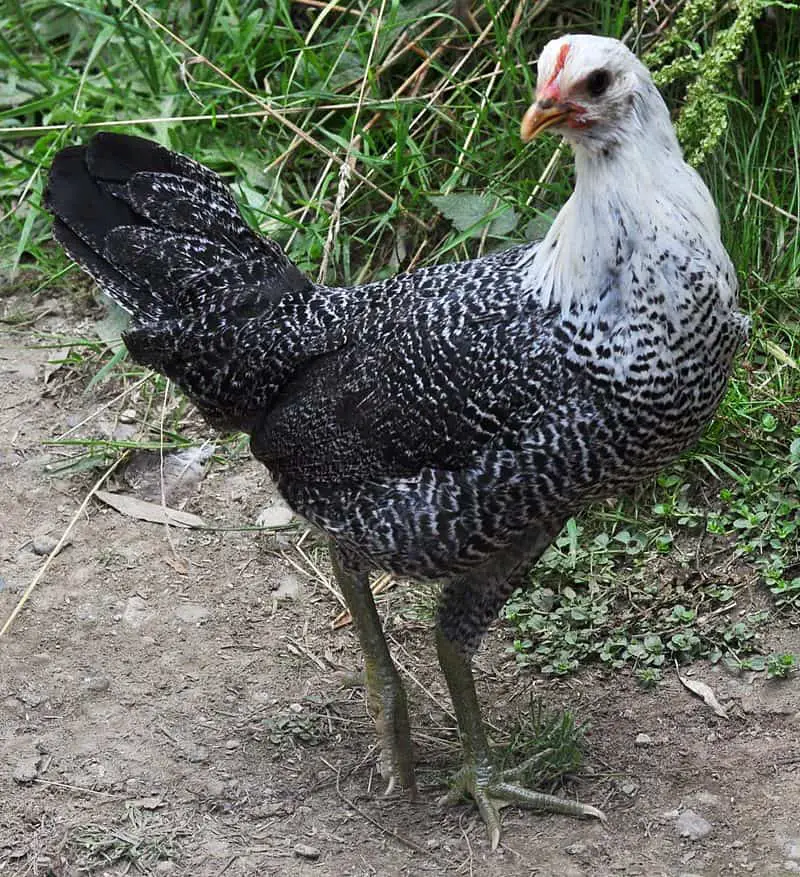
Fayoumi chickens originate from Egypt’s Fayoum district. Little else is known about its origin until it was brought to the West. Still, it is believed to be an ancient descendant of the original jungle fowl adapted to the Egyptian environment.
They are small, lightweight, friendly, and reasonably proficient egg-layers at around 150 small eggs per year. They are very hardy against heat and diseases and quick to escape predators, making Fayoumi chickens great for keeping in the desert.
According to (the highly recommended) book Storey’s Guide to Raising Chickens, Fayoumi Chickens are in danger of extinction due to low interest in non-traditional breeds. By keeping and breeding Fayoumis, you can help conserve this great little bird.
Naked Neck Chickens
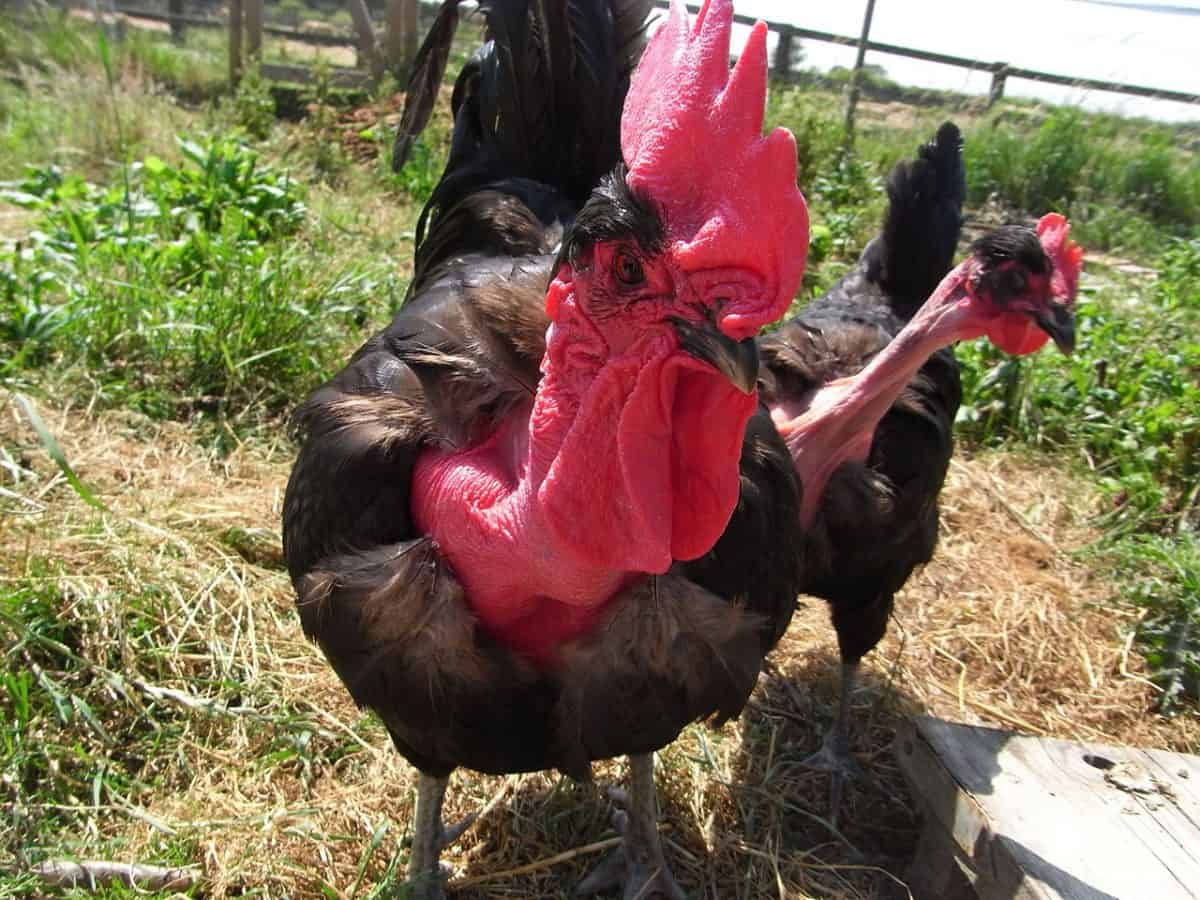
There are several good African chicken breeds. Unfortunately, many are hard to find outside of Africa, but the Naked Neck is available throughout the world, often under the names Transylvanian Naked Neck or Turken.
Naked Neck chickens were bred uring the 17th century from an earlier Malaysian breed. They have around half as many feathers as most other chickens, which makes them very heat-hardy, and they require less feed than most other chicken breeds.
Naked Neck chickens are not the prettiest of birds, to put it mildly. With their featherless head and neck, they look like, well, let’s just say they remind me of vultures. And that’s not an accident, since cultures are bold for the exact same reasons: staying cool in a hot environment.
But don’t let their odd appearance distract you. Naked Neck chickens lay around 150 medium-sized eggs per year, and they are easy to pluck due to the low amount of feathers.
How to Make Chickens Comfortable in the Desert
Provided you select a heat-hardy breed such as any of the five mentioned above, you won’t have to worry too much about your chickens suffering in the heat. Just make sure they always have access to clean and fresh water.
That being said, here are a few tips that will make their lives just a little more comfortable:
- Sufficient ventilation in the coop: Chickens give off a lot of heat, and if they sit together in a relatively small coop, it can get hot quickly. Adding sufficient ventilation will keep the coop cooler and more comfortable.
- Use the right coop roof materials: Use a light roof color ranter than black, as a black roof will absorb much more heat from the sun. A wood roof will also provide better insulation from the sun rays than a plastic or aluminum roof.
- Insulation: Insulation not only keeps the cold out in cold climates, but it also keeps the heat out during hot days. Insulating the roof will help keep the temperature down, as long as you ensure adequate ventilation.
- Provide shade: Plant a few trees or shrubs to provide shade or construct a lean-to that they can cover below during the hottest part of the day.
- Ice water: On sweltering days, you can add a few ice cubes to their water. This will keep your chickens’ body temperature down, and they will be much more comfortable.
- Provide a pool: Fill a small kiddie pool with water for your chickens to dip their feet in. Chickens will cool off in water, just make sure it’s shallow and that that they can get out easily, and never let small chicks near it! Chickens usually don’t like to swim, but they will use it when the heat gets too much.

